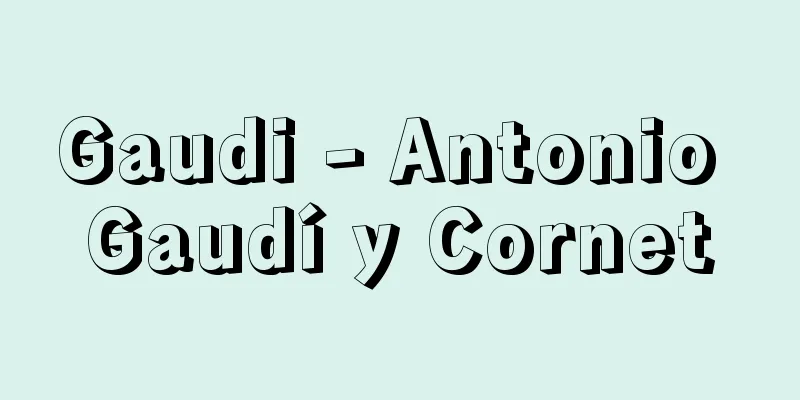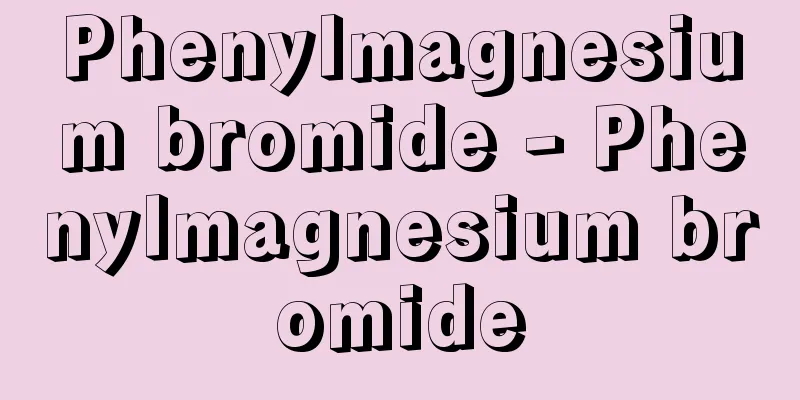Gaudi - Antonio Gaudí y Cornet

|
Spanish (Catalan) architect. Born June 26th in Reus, Catalonia. His father was a coppersmith, and he grew up in a modest economic environment. He entered the School of Architecture in Barcelona in 1874, but while he was there he learned practical skills by assisting famous architects such as Francisco de Paula del Villar y Lozano (1828-1903) and Josep Fontsere i Mestres (?-1897). After graduating in 1878, he began his energetic design career, starting with the design of the Mataró Workers' Cooperative Machine Factory (1882). His early works include the Vicens House (1885), the Villa "El Capricho" (1885), the Güell Villa (1888), and the Güell House (1889), all of which have beautiful decorative details that reflect the Islamic design unique to Spain. Through his work during this period he met the Marquis of Comillas and the Güell family, who would become his patrons and play an important role in his later life as an architect. In 1883, Gaudí took over from Villar as chief designer of the Sagrada Família in Barcelona, a job he continued until his death. In the 1890s, he built the College of St. Teresa (1890), the Episcopal Palace of Astorga (1893), and the Botines Palace in León (1894), often incorporating Gothic designs. In 1892, he traveled to Morocco, where he designed a building for a Franciscan monastery in Tangier, but this was never realized. After 1900, Gaudi's designs are divided into an early and a late period. At the start of the 20th century, he was almost freed from the constraints of past architectural styles, and began to realize highly original works with bold structural spaces and unrestrained designs and decorations. On one side are masterpieces of residential architecture such as Casa Calvet (1904), Casa Batlló (1906), and Casa Mila (1910), while on the other are works such as Park Güell (1900-14) and the basilica of Colonia Güell (1908-14, only the crypt was realized). Particularly noteworthy is the inventive structural treatment he showed in the design of buildings covering large spaces. Furthermore, work on the Sagrada Familia, which began in 1883, began with the completion of the crypt, followed by the exterior walls of the apse, the attached kindergarten, the façade of the eastern transept symbolizing the Nativity, and the four towers. However, Gaudi died in a traffic accident in Barcelona on June 7, 1926. Construction was temporarily halted, but after World War II, work continued based on his designs, and the façade and tower of the western transept symbolizing the Passion of Christ are now complete. [Takashi Hasegawa] "The Complete Works of Gaudi, edited by Nakayama Kimio, Isozaki Arata, et al., 2 volumes (1979, Rokuyosha)" ▽ "Reading Gaudi, by Nakayama Kimio, Higashino Yoshiaki, et al. (1984, Gendai Kikakushitsu)" ▽ "Gaudi's Works, with commentary by Basecoda, translated by Ishizaki Yuko and Irie Masayuki (1985, Rokuyosha)" ▽ "Antonio Gaudi Theory, by Irie Masayuki (1997, Waseda University Press)" ▽ "The Life of Gaudi, by Kitagawa Keiko (Asahi Bunko)" [References] |A tall tower rising above the "Gate of the Nativity (Nativity Facade)" on the east side. Various sculptures are applied all over the facade. Part of the World Heritage "Works of Antonio Gaudi" (Spain, registered in 1984 and 2005) Barcelona, Spain ©Kyoko Kamita "> Sagrada Familia A representative residential building by Gaudi. The strange shape and color of the exterior walls are impressive. Part of the World Heritage Site "Works of Antonio Gaudi" (Spain, registered in 1984 and 2005) Barcelona, Spain ©Kyoko Kamita "> Casa Batllo One of a series of residential buildings by Gaudi. The apartment complex is called La Pedrera (the quarry), and the overall design resembles an animal's nest. Part of the World Heritage Site "Works of Antonio Gaudi" (Spain, registered in 1984 and 2005) Barcelona, Spain ©Shogakukan "> Casa Mila One of the various objects in the park. Gaudi began to create highly original works in the 20th century. Part of the World Heritage Site "Works of Antonio Gaudi" (Spain, registered in 1984 and 2005) Barcelona, Spain ©Kyoko Kamita "> Fountains in Park Guell Source: Shogakukan Encyclopedia Nipponica About Encyclopedia Nipponica Information | Legend |
|
スペイン(カタルーニャ)の建築家。6月26日カタルーニャのレウスに生まれる。父は銅細工師で、経済的にはあまり恵まれない環境に育った。1874年バルセロナの建築学校に入学したが、在学中からビリャールFrancisco de Paula del Villar y Lozano(1828―1903)やフォントセレJosep Fontsere i Mestres(?―1897)などの著名な建築家の仕事を手伝って実務を学んだ。78年の卒業後、マタロ労働者協同組合機械工場(1882)の設計を手始めに、精力的な設計活動を開始した。たとえば、ビセンス邸(1885)、別荘「エル・カプリチョ」(1885)、グエル別邸(1888)、グエル邸(1889)などが彼の初期を飾る作品群であり、いずれもスペインに特有のイスラム系デザインの投影がみられる美しい装飾的細部をもつ。この時期の仕事を通して、建築家としての彼の後の生涯に重要なかかわりをもち、パトロンとなったコミリャス侯爵やグエル家の人々と出会っている。 1883年には、ガウディは、ビリャールから引き継いで、バルセロナのサグラダ・ファミリア教会の設計責任者となり、この仕事は彼の死に至るまで続いた。 1890年代には、聖テレジア学院(1890)や、アストルガ監督教会司教館(1893)、レオンのボチネス邸(1894)などがつくられたが、この時期にはゴシック系のデザインがしばしば取り入れられた。1892年にはモロッコに旅し、タンジールのフランシスコ修道会の建物の設計を行ったが実現しなかった。 1900年を境にして、ガウディの設計は前期と後期に分かれる。20世紀に入ると、ガウディは過去の建築様式の制約からほとんど自由になり、大胆な構造による空間と、奔放な意匠と装飾をもつ、きわめて独創的な作品を実現するようになる。たとえば、カサ・カルベット(1904)、カサ・バトロ(1906)、カサ・ミラ(1910)などの一連の住宅建築の傑作が一方にあり、他方にはグエル公園(1900~14)、コロニア・グエルの聖堂(1908~14、地下祭室のみが実現)などの仕事があった。とくに注目すべき点は、大規模な空間を被覆する建物の設計で彼が示した創意に満ちた構造的な処理方法であった。 また1883年以来のサグラダ・ファミリア教会の仕事は、最初に地下祭室を完成させたのち、アプス(後陣)の外壁面、付属幼稚園、キリストの降誕を象徴する東側袖廊(しゅうろう)のファサード(正面)と4本の塔などを完成させた。しかし、ガウディはバルセロナで交通事故により1926年6月7日に没した。工事は一時中断したが、第二次世界大戦後、彼のデザインをもとに工事が続けられ、西側袖廊のキリスト受難を象徴するファサードと塔が現在完成している。 [長谷川堯] 『中山公男・磯崎新他編『ガウディ全作品』全2巻(1979・六耀社)』▽『中山公男・東野芳明他著『ガウディを〈読む〉』(1984・現代企画室)』▽『バセコーダ解説、石崎優子・入江正之訳『ガウディの作品』(1985・六耀社)』▽『入江正之著『アントニオ・ガウディ論』(1997・早稲田大学出版部)』▽『北川圭子著『ガウディの生涯』(朝日文庫)』 [参照項目] |東側の「降誕の門(生誕のファサード)」の上にそびえる高塔。ファサードの至る所にさまざまな彫刻が施されている。世界文化遺産「アントニオ・ガウディの作品群」の一部(スペイン・1984、2005年登録) スペイン バルセロナ©Kyoko Kamita"> サグラダ・ファミリア教会 ガウディの代表的な住宅建築。不思議な形状と外壁の色合いが印象的である。世界文化遺産「アントニオ・ガウディの作品群」の一部(スペイン・1984、2005年登録) スペイン バルセロナ©Kyoko Kamita"> カサ・バトロ ガウディによる一連の住宅建築の一つ。ラ・ペドレラ(石切場)とよばれる集合住宅で、全体に生物の巣を思わせる。世界文化遺産「アントニオ・ガウディの作品群」の一部(スペイン・1984、2005年登録) スペイン バルセロナ©Shogakukan"> カサ・ミラ 公園内にあるさまざまなオブジェの一つ。ガウディは、20世紀に入ると、きわめて独創的な作品を実現するようになる。世界文化遺産「アントニオ・ガウディの作品群」の一部(スペイン・1984、2005年登録) スペイン バルセロナ©Kyoko Kamita"> グエル公園の壁泉 出典 小学館 日本大百科全書(ニッポニカ)日本大百科全書(ニッポニカ)について 情報 | 凡例 |
<<: Kautilya - Kautilya (English spelling)
Recommend
Bandala
…Tributo and Polo granted exemptions to some resi...
Halsey
Admiral of the United States Navy. Born in Elizabe...
Kawabe Charcoal Firewood Wholesaler - Kawabe Tan Shindonya
…The increase in demand in the cities gave rise t...
Usugeno - Thin
…A thin, mesh-like fabric made by weaving four wa...
"Kanmon Gyoki" - Kanmon Gyoki
…The entire 44 volumes of the original handwritte...
Strait of Dover
A strait between the UK and France. Its French na...
Yogacara theory - Yuishikisetsu
The theory asserted by the Yogacara school of Indi...
Gathering - Shuugou
When clearly defined objects such as desks and ch...
Court society
…Louis XIV moved to Versailles in 1682, and at it...
Ferdinand Marie, vicomte de Lesseps
French diplomat. Founder of the Suez Canal Compan...
Capacity
Hungarian photographer. His real name was Friedman...
Press code
This memorandum was issued by GHQ (General Headqua...
Magnetosphere
The Earth's magnetic field is confined to a f...
Bardesanes (English spelling)
…Syrian Christian theologian. Greek name Bardēsan...
Ono [city] - Ono
A city in the middle reaches of the Kakogawa River...









